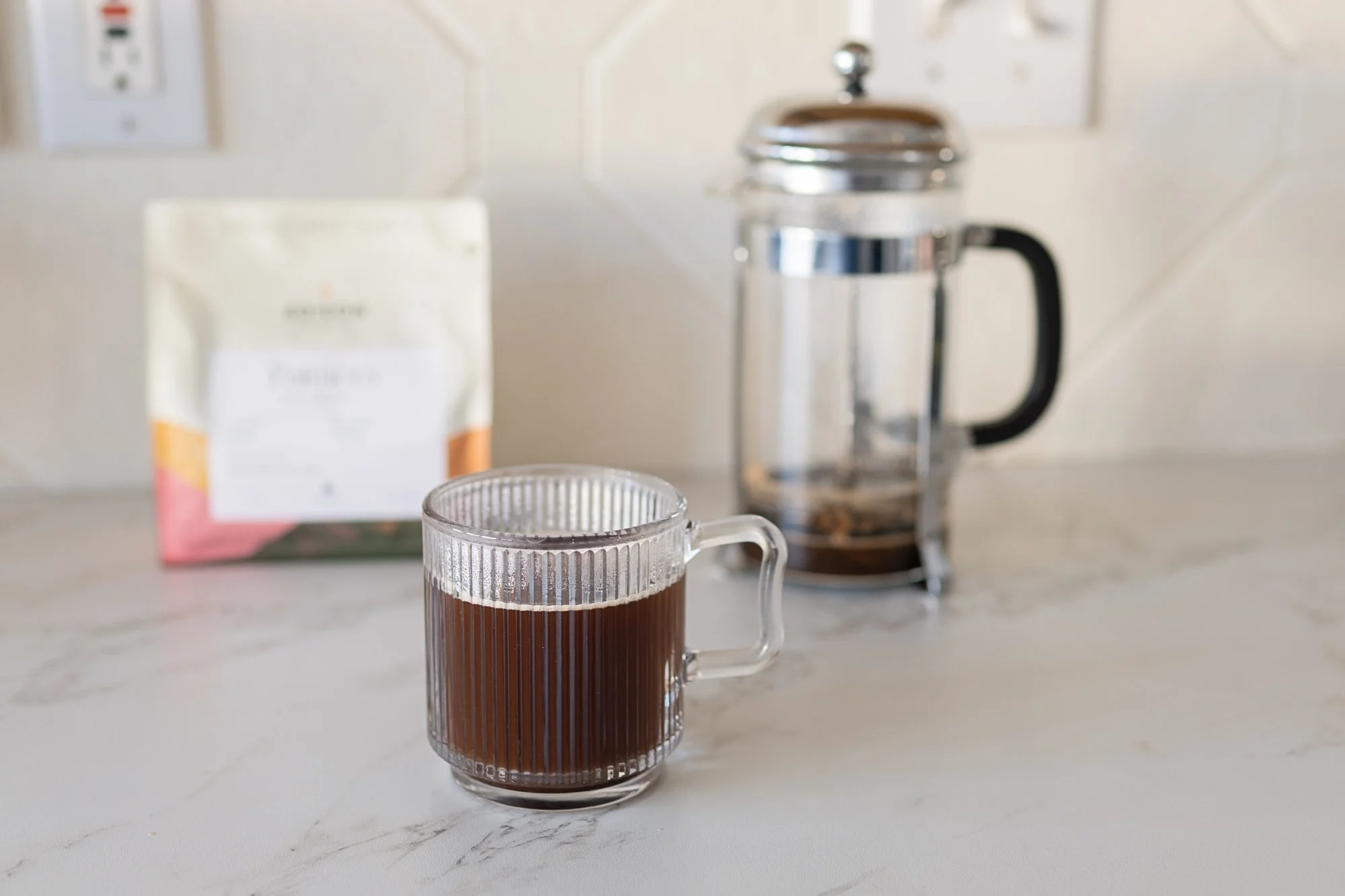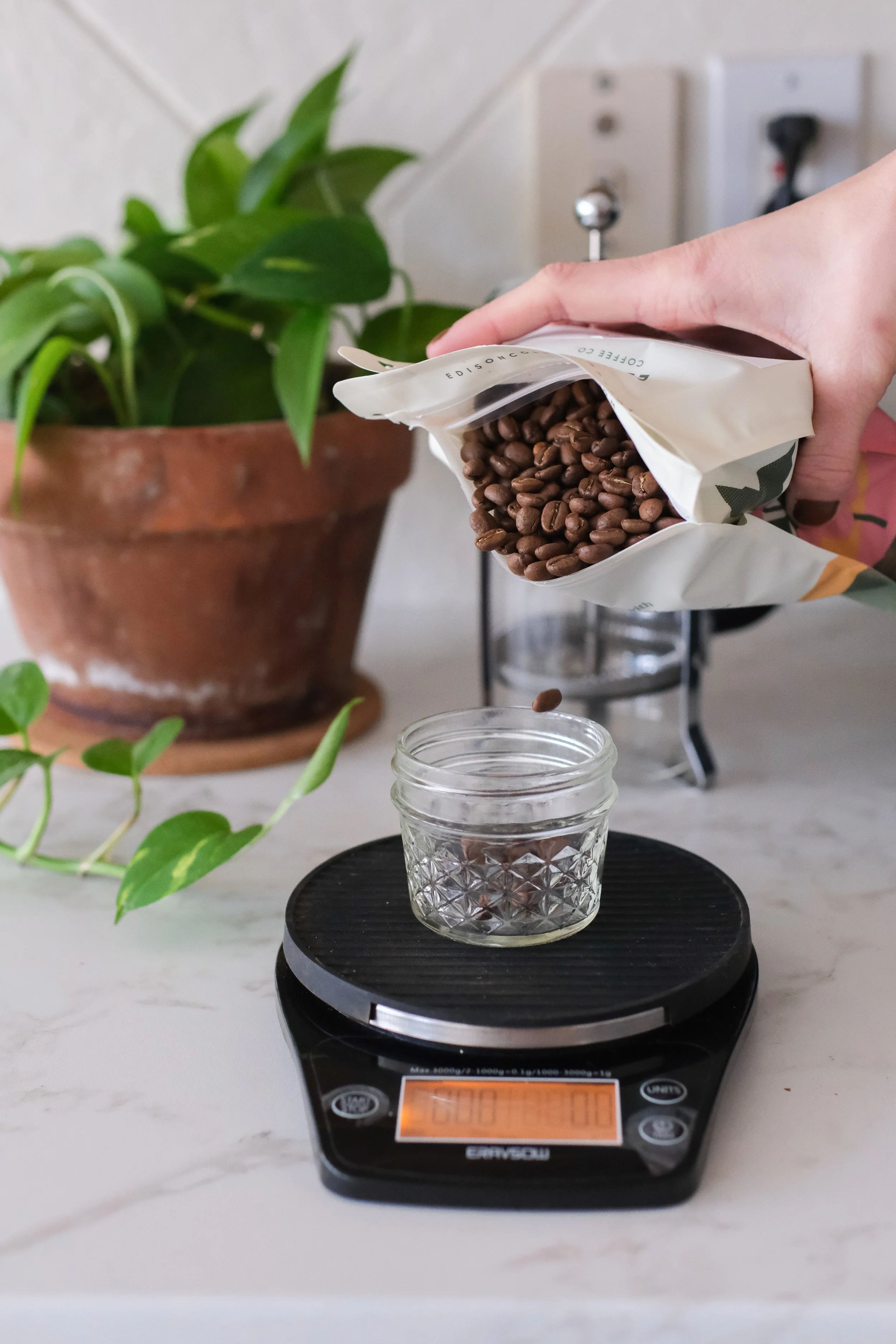Edison Coffee Brew Guide: The French Press
It may surprise you to learn that the French Press was, in fact, originally conceived by an Italian inventor. Originally intended as a way to separate tomatoes from their juice, he collaborated with two other inventors to make a patent for a coffee part. The rest, as they say, is history, for the French Press has been a long-standing favorite by coffee enthusiasts since the 1950s. In contrast to most “third-wave” brewing methods, which favor coffee’s lighter notes, the French Press is for those who like their coffee strong. Coffee is immersed fully in hot water for several minutes, like tea, before a mesh filter is pressed into the container. The filter pushes the grounds to the bottom leaving the extracted coffee above. Unlike paper filters, the mesh filter does not retain many of the coffee’s natural oils, which leaves the extracted coffee tasting thick and full-bodied.
If you like your coffee bold, or like to pair it with cream, then the French Press is for you! Follow along with this guide to learn the best way to brew a French Press using a bag of our coffee.
Materials Needed:
French Press: A variety of companies manufacture these brewers. They can differ by size and material, but the method is the same across the board. For our recipe, we’ll be using Bodum’s 1 liter Chambord French Press, which is about as standard as you can get. But feel free to upscale to something larger if you want to brew more; you can also opt for a stainless steel brewer if you’re feeling fancy!
Grinder: As you know, we like our coffee freshly ground! Similar to our Chemex guide, we recommend a grinder that can go coarse without sacrificing consistency. Our trusty Baratza Encore should suffice once more!
Scale: You will be placing your French Press on top of the scale, so make sure that the scale’s max weight can support the weight of the brewer and the coffee.
Source of hot water: Baristas on a budget, rejoice! The French Press does not require a gooseneck kettle for its brewing, unlike pour-overs; nor does it necessarily require a kettle at all, though one is certainly recommended. Really, you just need a source of hot water and something to pour it into the French Press. Whether you do so with a kettle or a pan full of hot water and a measuring cup is up to you and what you’re willing to spend.
Coffee: We tested out a variety of our beans using the French Press and found that our stronger coffees tasted the best. Blends like Telegraph, Phonograph, and Transmitter bring a rich taste to the French Press that suits the brewer’s integration of the coffee’s oils. When testing lighter-roasted coffees, we found that they were less complementary to the French Press’ heavy-extraction style. For that reason, we suggest you try out one of our balanced or old-school blends on a French Press first, before experimenting with lighter coffees.
Instructions:
Measure out your coffee:
If you’ve been following along with our brew guides, then you know we work with ratios in our brewing, specifically 1:17. In order to get a stronger cup, however, we will use a 1:15 ratio for the French Press. For this recipe, we will use 50 grams of coffee and 700 grams of water.
Heat water:
If you can measure water temperature, it should heat to about 200 degrees.
Grind coffee:
The French Press calls for a coarse grind setting. While you’re not wanting to get whole shells of coffee beans in the grind, the grind will be coarser than any pour-over we’ve covered so far, including the Chemex.
Empty ground coffee into the French Press Carafe and zero out on your scale. Pour hot water into the French Press so that just enough fills above the bed of grounds, then set your timer for one minute:
This will act as our bloom for the coffee. Give it three good stirs to ensure that all grounds are being extracted.
After one minute has passed, continue filling the press with hot water until your scale reads out 700 grams. Give three more stirs, then wait four more minutes. When you’re ready, place the lid and filter onto the French press and plunge the filter towards the grounds:
If you feel resistance against a steady push, then your coffee may be too fine. Likewise, if the filter plunges too easily, it means that your grounds were too coarse. Take note of this while you’re pressing.
The French Press is Ready to Drink!
Our recipe makes two servings, so that you can enjoy it with a friend. Add cream and sugar, if preferred.
final thoughts:
For all of the innovation and creativity that has come out of the coffee industry in the past 20-30 years, the French Press represents a classic approach to brewing that’s still worthy of being enjoyed. Though it works best with stronger coffees than it does with lighter ones, its rich and hearty character is just as distinct as coffees that are brewed to be floral and fruity. You may be partial to one style of coffee over the other, but we hope that getting to try a variety of methods will help you develop a greater appreciation for coffee, and all of its wonderful diversity.






